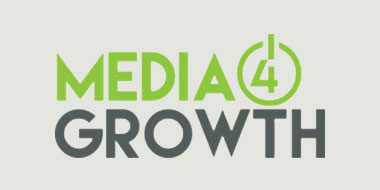Audience Data & Measurement
‘Advertising is about outcomes’
Denise Turner, CEO, Route (which provides audience metrics for OOH advertising in the UK) explains why outcomes need reliable inputs; It is vital that the data is transparent and trustworthy, so that advertisers can trust the inputs when they are making decisions about where to spend their money.

I have had the absolute privilege of working in advertising and communications for over 30 years. Almost a quarter of a century of those were in media agencies, responsible for planning and data measurement across multiple channels.
Latterly I have focused – first in publisher marketing for seven years and currently I am the Chief Executive of Route (outdoor audience measurement in Britain).
Whilst I am focused on delivering the best out of home audience measurement system possible, I’ve never lost the importance of perspective, and taking a broader view of marketing and advertising.
No medium or channel is an island, they all play different roles in the communication process. People encounter brands in various ways through a multitude of channels.
Just as there are many opportunities for brands to connect with people, there are numerous sources of data and metrics to support the decisions being made.
How do make these decisions?
Whilst I cannot pretend or even claim to have all the answers, I have some core guidelines which shape my decision-making. Evaluation should not only exist in post-campaign analysis; it should be evident front and centre in the planning phase too.
My principles for measurement are drawn from both empirical evidence and lived experience of applying the evidence.
Three things strike me.
1. Mind your mission
It’s vital to know with clarity what your end goal is. I’ve recently read a book called How Big Things Get Done. It’s not directly about marketing or advertising, but it does have key learnings that we can apply to what we do. One of these is the concept of ‘thinking from right to left’. In other words, for any project that you are involved in, don’t start at the beginning, rather fast forward to the end and identify the outcome you want and then work backwards.
In audience measurement there are three main players – the advertiser/agency, the industry currency and the research supplier. The end goal (or right hand point) will be different for each of these stakeholders, but ultimately the service that the currency provides needs to deliver what the advertiser needs as this is the ultimate right hand point.
Ultimately, it’s about outcomes – advertisers spend money to get results. And outcomes need reliable inputs.
As an industry currency our goal is crystal clear; to deliver the who and how many when it comes to seeing outdoor advertising. We have a duty to our stakeholders to do that robustly and objectively with clarity and confidence. It is vital that the data we provide is transparent and trustworthy, so that advertisers can trust the inputs when they are making decisions about where to spend their money.
2. People not devices
We are all human beings living in a physical world. We as people make choices on what products and services to buy. This is not a decision made by devices. The devices might help in making the decision but ultimately, human behaviour is at the heart of all purchasing. This sounds obvious to say, but it’s worthwhile reminding ourselves of this from time to time. The global advertising industry sometimes forgets that and gets seduced by the shiny new thing, whether this is big data, device-centric measurement or generative AI. Devices may be an aid to accurately reflect how people interact with brands, but only if real human behaviour is being recorded.
In out of home audience measurement, we have the opportunity to broadcast brands to people, lots of people. The medium is not private and highly targeted, it’s public and unparalleled in its capability to reach everyone. We need to design our evaluation accordingly. Someone said to me recently, that when you deliver an ad to someone’s mobile phone, only they see it, yet when you deliver an ad in out of home, whether that be classic or digital, it is in the public domain, and everyone knows about it.
3. Measure your metrics
We live in a world of data abundance – I would have said a lake, but it’s more of an ocean now. There is an ever-expanding array of data sources available. However, just because something can be measured, doesn’t mean it should be, nor that it provides accurate or meaningful results.
I’m a great believer in data layering and triangulation. They are vital if we are to get measurement right. We need the right combination of data inputs, all pointing in the same direction to give us confidence in the reliability of the outcomes.
In the increasingly complex world of out of home, more than perhaps any other channel, we need a plethora of data sources to give us confidence in all the dimensions which we need to report on. Just think, we have vehicles, people walking, we have ads indoors, and outdoors, we have ads that move (think buses and taxis), we have ads that are illuminated and those that are not, we have ads that are static and those whose content changes every 5,10,12, 20, 30 seconds and we need to be able to account for seasonal fluctuations in behaviours. All these aspects require data to underpin them.
When it comes to data, it is vital we measure the metrics. We need to audit and calibrate the data sources before we can use them. We need to understand what they are and what they are not measuring. We need to ensure the data is not biased (or at least understand what biases exist), and perhaps most importantly we must be clear on the purpose for which the original data was collected.
There are parallels with the current buzz around AI. Clearly there is potential for this to greatly shape measurement going forward, but how do we know if the outputs from an AI model make sense if we don’t have a clear, well researched and objective reference point? Mobile data is abundant, but what does it really measure? Where does it come from? What is it representative of? Sensors attached to posters and screens can add vital volumetrics and show how they vary over time, but what are they measuring and what are they missing? Are they measuring visits or visitors? Are they really measuring people or devices?
So in conclusion, I would urge you embrace as many data sources as possible, but only invite them into your home/lives/business if they are robust, reliable, make sense, and add value and if you can decode where they come from and what they entail.



























